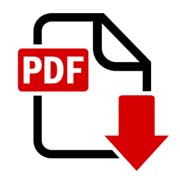| Year |
2013 |
| Volume/Issue/Review Month |
Vol. - VI | Spl. Issue I | January |
| Title |
Enhancing the Quality and Effectiveness of Education: An Innovative Approach towards Curtailing the Skills Gap |
| Authors |
Ajit Kumar Kar , Amrita Das , Susrita Das |
| Broad area |
Enhancing the Quality and Effectiveness of Education: An Innovative Approach towards Curtailing the Skills Gap
|
| Abstract |
Today in this fast changing world, changes in the economic and social
fundamentals call for transformation in the skills, capabilities and attitudes.
This requires a shift in the delivery and pedagogy used in the current education
system. The Quality Code sets out expectations which education providers
are required to meet to ensure that appropriate and effective teaching, support,
assessment and learning resources are provided to students; that the learning
opportunities provided are monitored; and that the provider considers how to
improve them. Lack of this leads certified degree holders with a dry brain &
we find a skill gap between the education imparted and capabilities expected
when a student goes to corporate. And, this is due in part to a lack of
understanding, by both students and faculty, of the attributes of effective
teaching & training. This paper presents various tools and techniques by
which one can identify and explore some of the attributes of successful
pedagogical itinerary & methods of imparting them through which a
contribution to quality education can be made. |
| Description |
The word innovation, according to the Oxford Dictionary, means the introduction of novelties, the alteration of what is established, a novel practice and a change in established methods. Generally, in the field of education to innovate is to create someth |
| File |
 |
| Referenceses |
- Felder, R.M. 1994a. Any questions? Chem. Engr.
- Education, 28 no.3:174-175.
- 1994b. The myth of the superhuman professor. J. Engr.
- Education, 82, no.2: 105–110.
- 1995. A longitudinal study of engineering student
- performance and retention. IV. Instructional methods
- and student responses to them. J. Engr. Education,
- 84, no.4: 361–367.
- and R. Brent. 1994. Cooperative learning in technical
- courses: Procedures, pitfalls, and payoffs. ERIC
- Document Reproduction Service, ED 377038.
- and R. Brent. 1996. “Navigating the bumpy road to
- student–centered instruction.” College Teaching 44,
- no.2: 43–47.
- and R. Brent. 1997. Speaking objectively. Chem. Engr.
- Education 31, no.3:178-179.
- G.N. Felder, and E.J. Dietz. 1998. “A longitudinal study
- of engineering student performance and retention.
- V. Comparisons with traditionally-taught students,”
- J. Engr. Education 87, no.4:469-480.
- Glassick, C.E., M.T. Huber, and G.I. Maeroff. 1997.
- Scholarship assessed: Evaluation of the
- professoriate. San Francisco: Jossey-Bass.
- Grandzol, J.R., and M. Gershon. 1997. Which TQM
- practices really matter: An empirical investigation.
- Quality Management Journal 97, no.4:43:59.
- Gronlund, N.E. 1991. How to write and use instructional
- objectives (4th ed.) New York: Macmillan.
- 140 Srusti Management Review, Vol -VI, Issue - I, Jan.-2013
- Jensen, P.A., and J.K. Robinson. 1995. Deming’s quality
- principles applied to a large lecture course. J. Engr.
- Education 84, no.1:45-50.
|